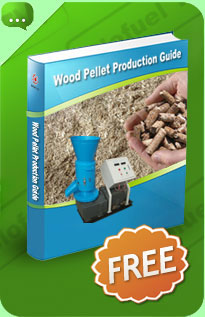Pelleting Mills
Wood pellets can be produced from sawdust that is fed into pelleting mills. There are two main types of pelleting mills available for home use being compact and designed to operate on electricity. The pellets are a source of renewable energy when used to fuel a wood pellet boiler in the home.
Introduction
Zero CO2 emissions are released in the process of making wood pellets, and therefore make it a great natural material for heating your home.
Pellets can be homemade from a variety of materials, although wood is the optimal choice in comparison to other organic matter such as hay or certain grasses.
An examination of the two types of pelleting mills available and the method for producing homemade pellets follows.
Homemade Pellets Using a Mill
There are certain specifications recommended by EEC and US Government/State Departments for the production of wood pellets, the main ones are as follows:
Size: 4mm x 20mm.
Ash content: between 1% and 6%.
Density: >600kg/m.
Calorific Value: >4.7kWh/kg.
Moisture Content: <10%.
Chlorine Content :< 800ppm.
Sulfur Content: <300ppm.
The sawdust can usually be obtained free from most sawmills, wood-working factories or tree-felling projects. These industries will be glad to get rid of it, as long as you load it into bags or a trailer and remove it yourself. There is a listing of sawdust suppliers in the US included in the reference section.
Some people also saw up logs and old pieces of wood to make their own sawdust for the pelleting mills as well.
Provided it has not been subjected to wet weather, the sawdust requires no further treatment; except for the addition of a little vegetable oil during processing to bind and moisten if it is too dry.
There are two types of pelleting mills suitable for producing homemade pellets. These include the flat die and the ring die mills.
Flat Die Pelleting mills
This was developed in the early1900’s to produce pelletized animal feed, with many farmers still using them for this purpose. A lot of these mills are mass produced in China being cheap and simple to manufacture. However, some makes allegedly lack pellet quality and control of the finished sizes, along with a tendency to wear between the rollers and die plate. Nonetheless, they are still the most popular type of mill used to produce homemade wood pellets, and are also manufactured by numerous European and American companies..
Operation
The sawdust is loaded into a hopper located on the top of the mill. From here it is gravity-fed into the mill, falling down to lie on top of the die plate.
The plate is a flat, circular shape about ½” thick incorporating the pellet dies in a circular pattern.
Two rollers (shaped like a dumbbell) revolve around and on top of the die plate. The clearance between the rollers and die plate is small; and being critical, is set at the makers before dispatch. (A sketch is shown below of the flat plate and roller components.)

